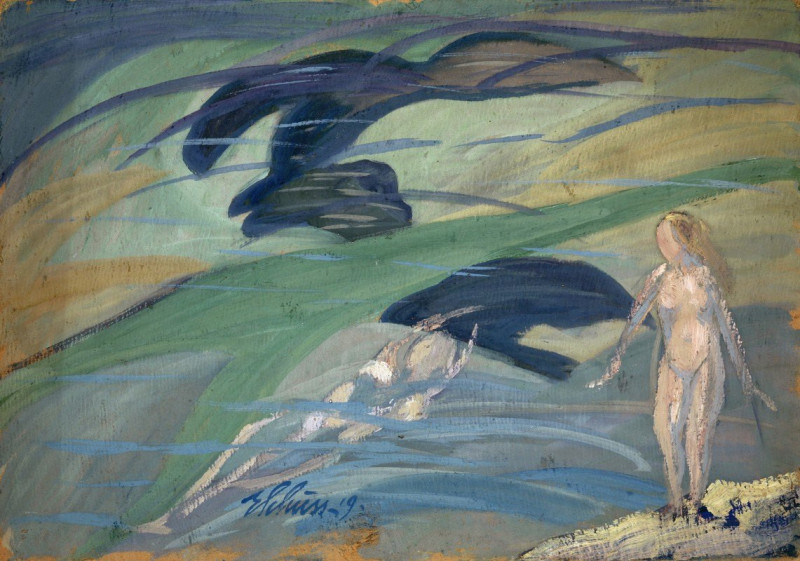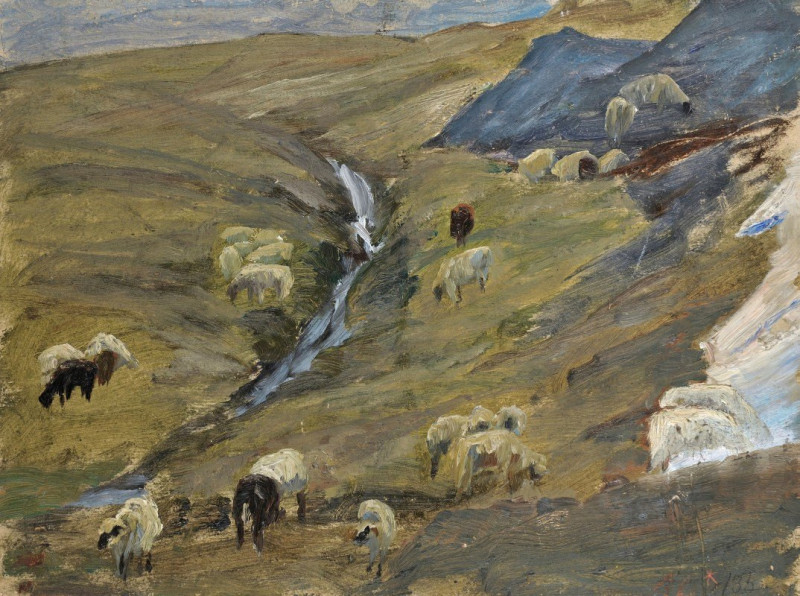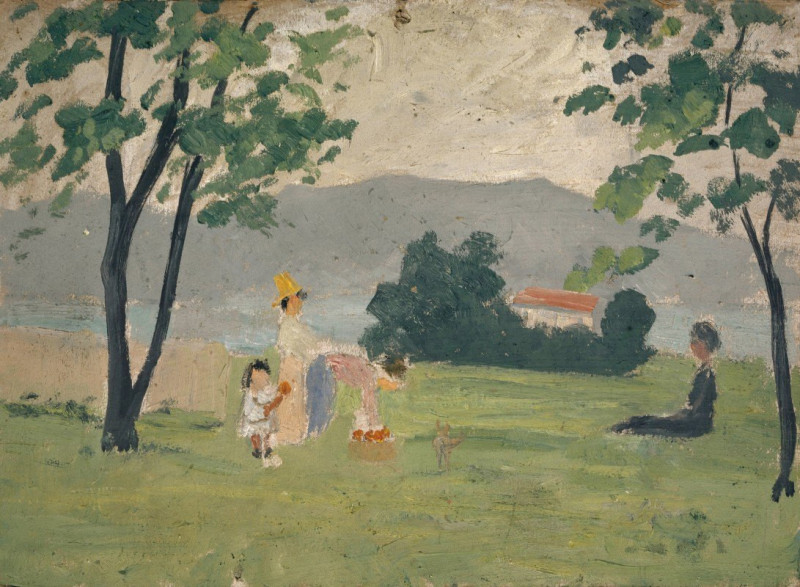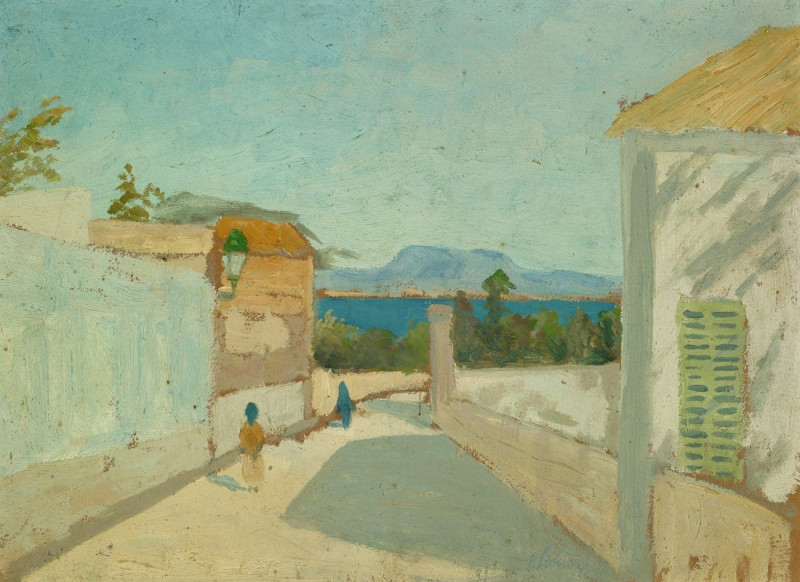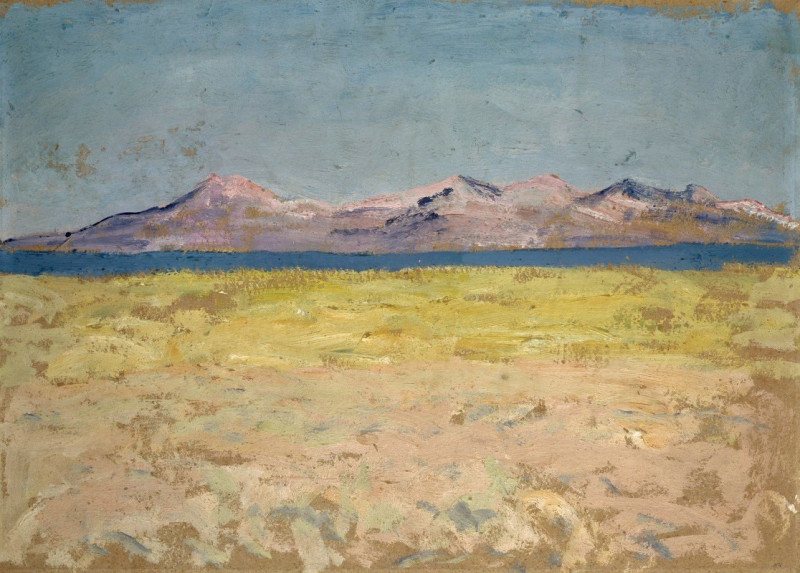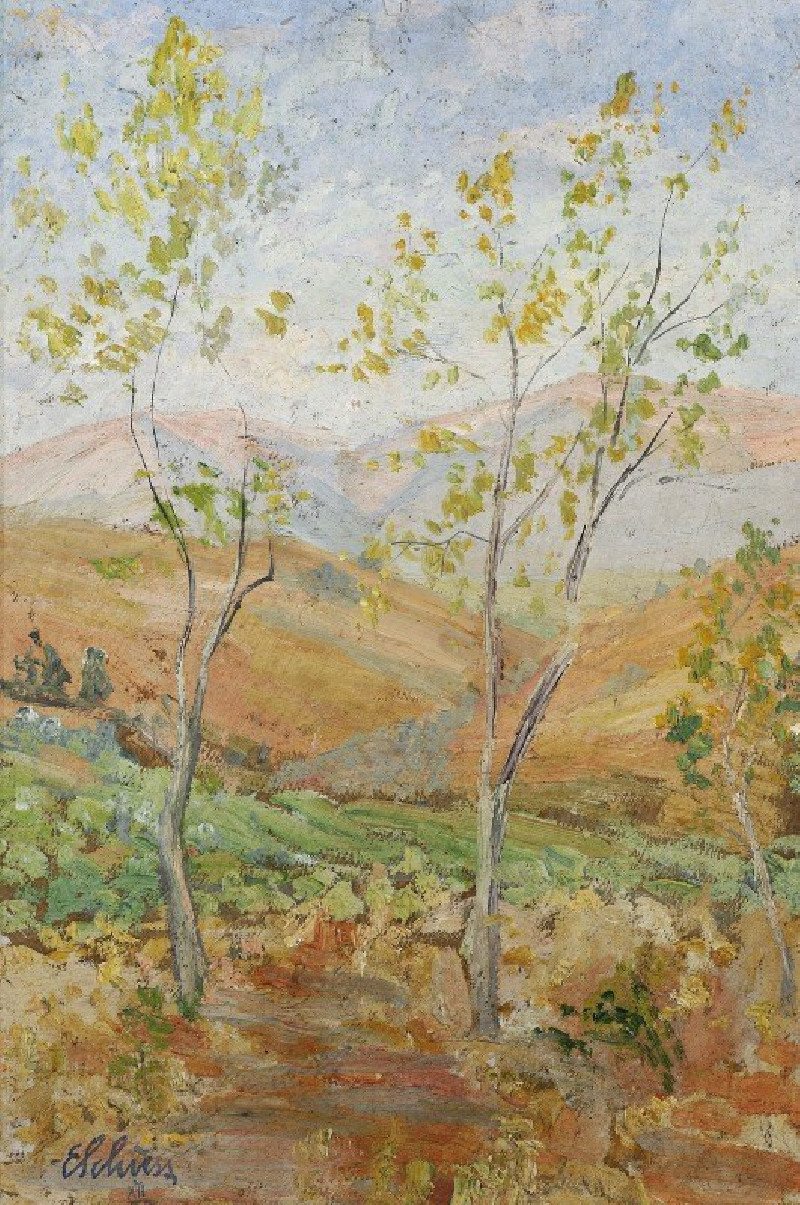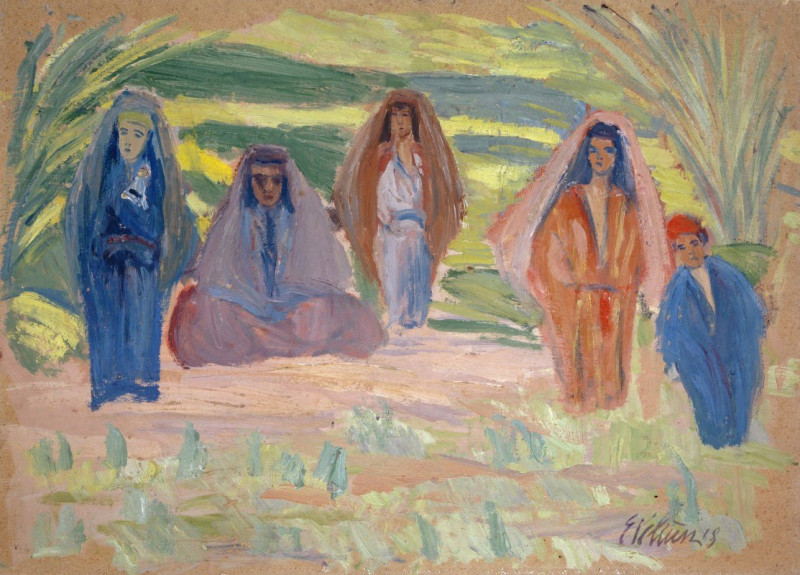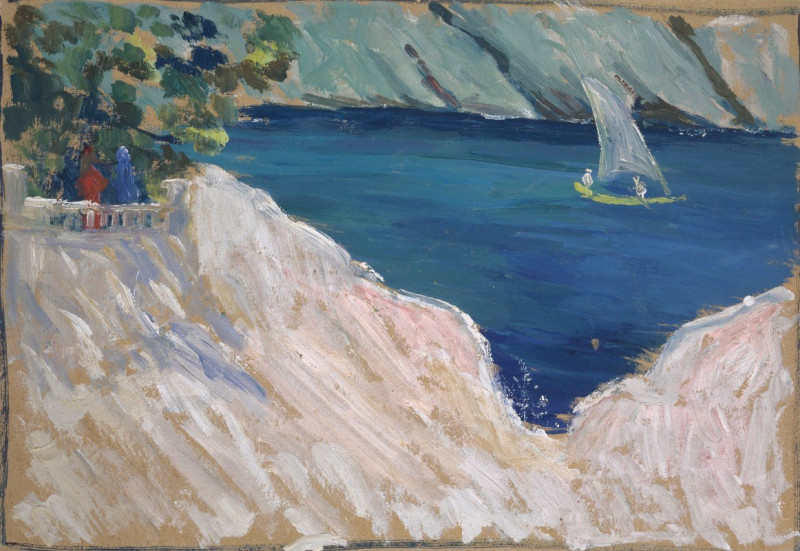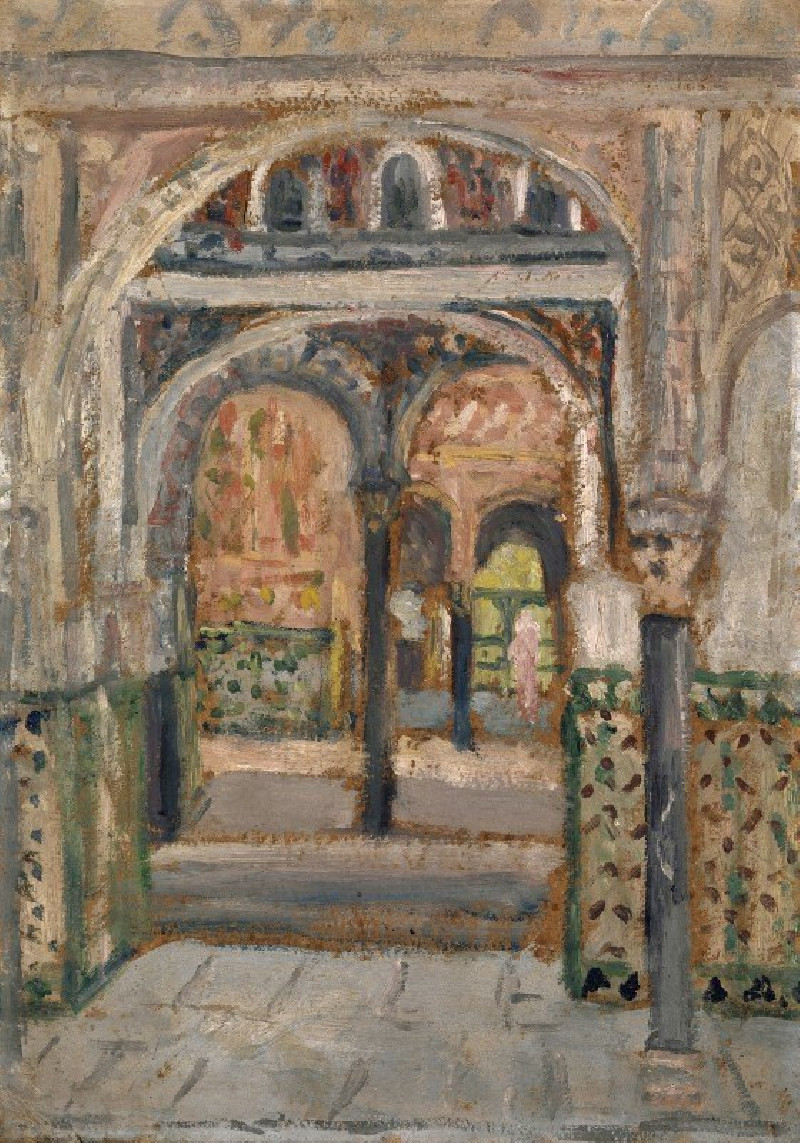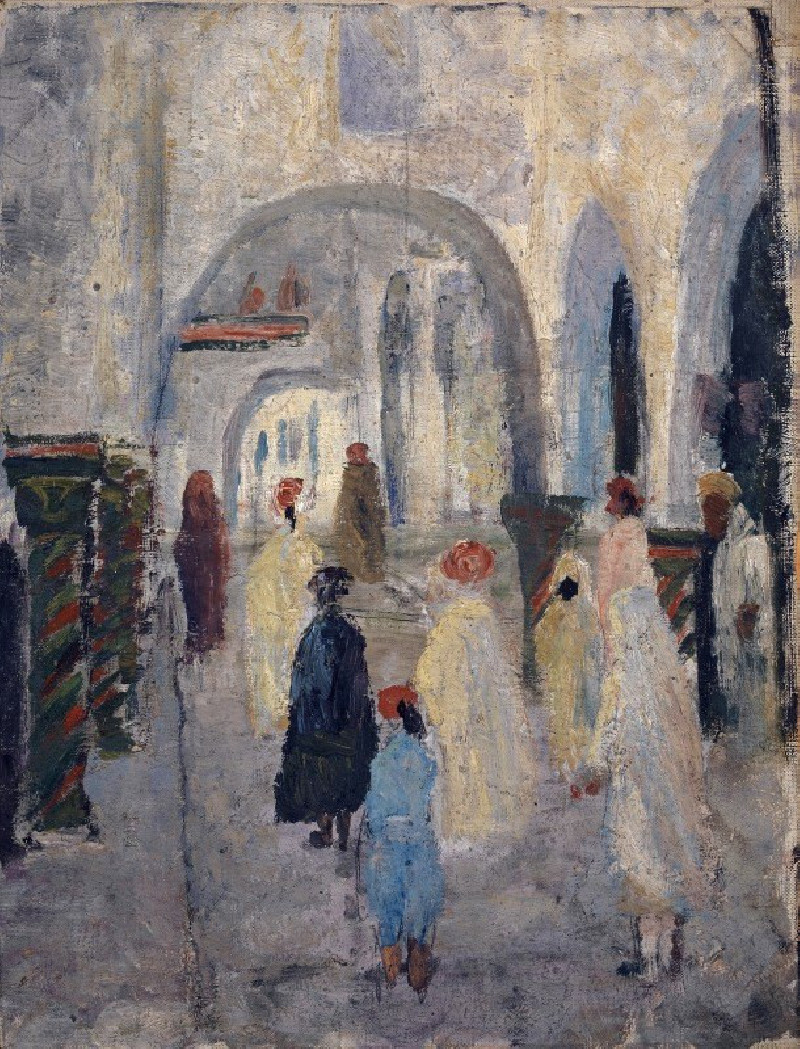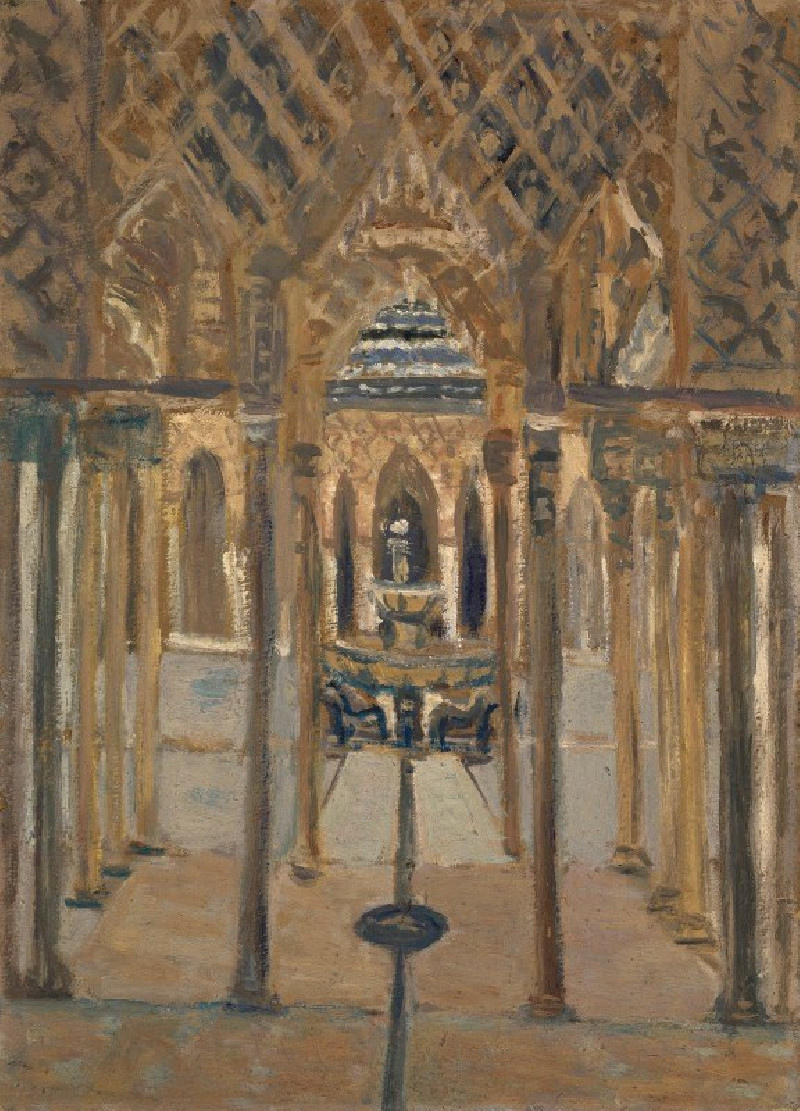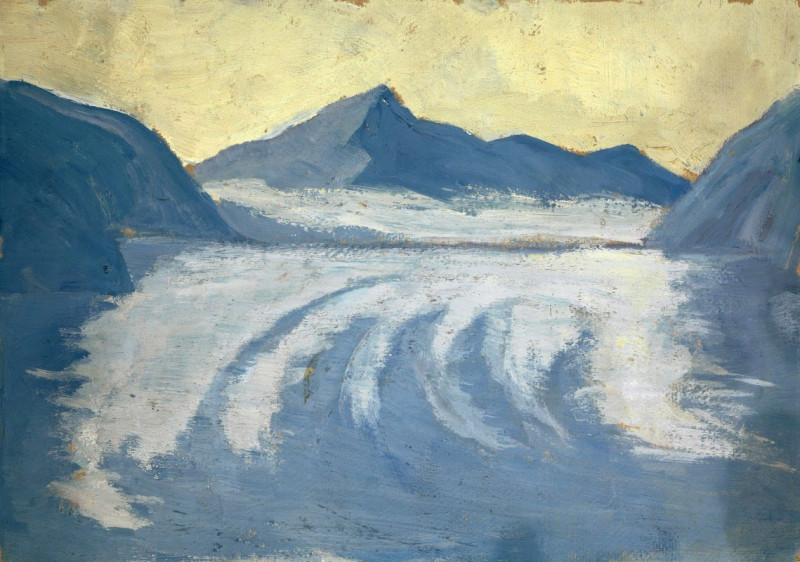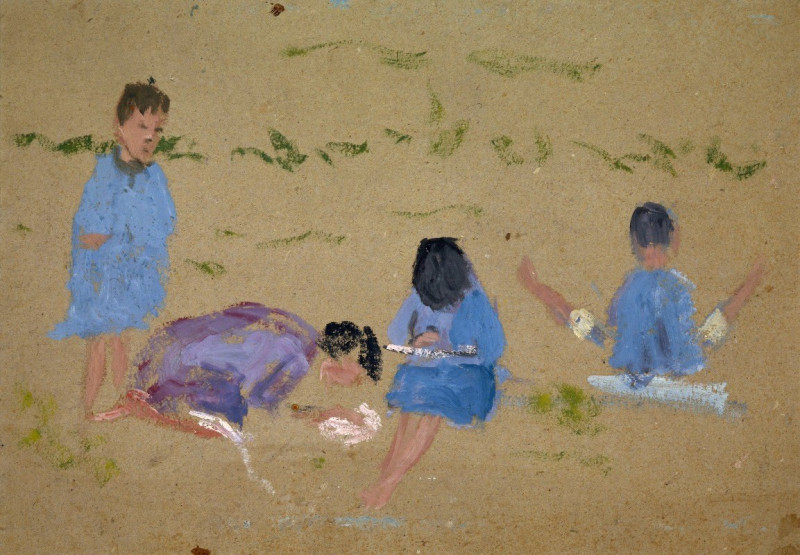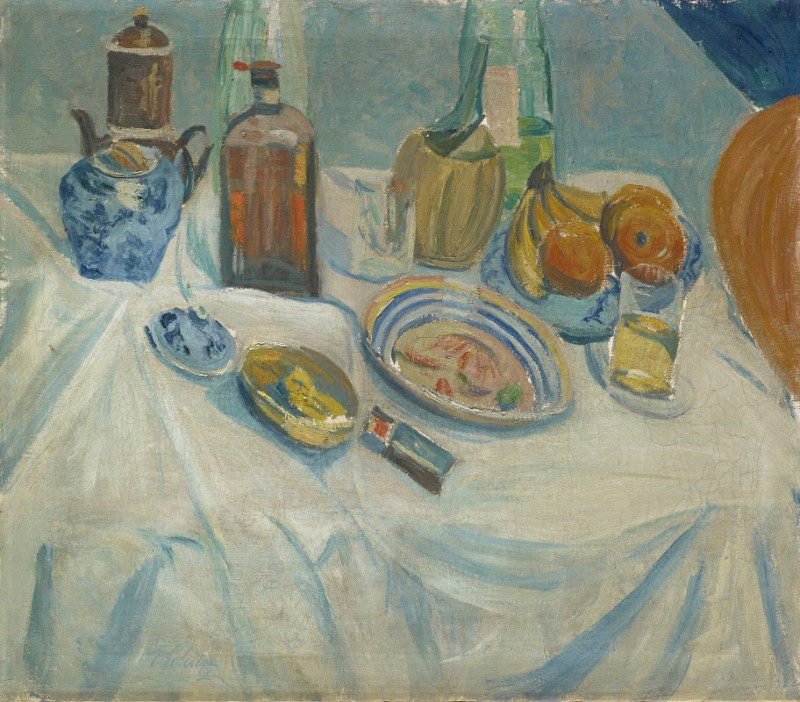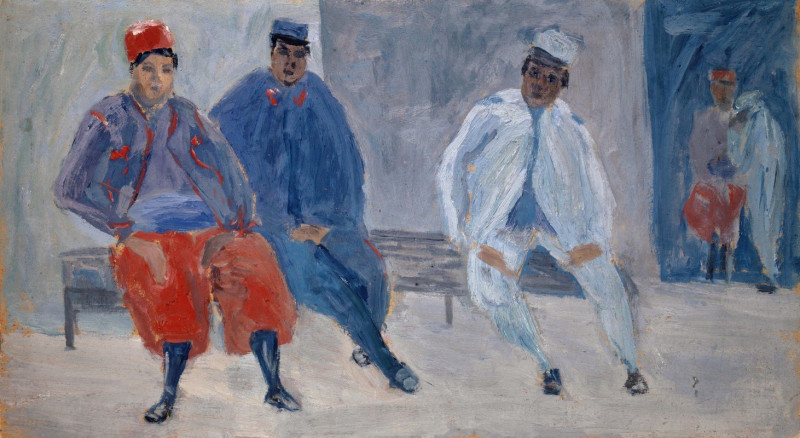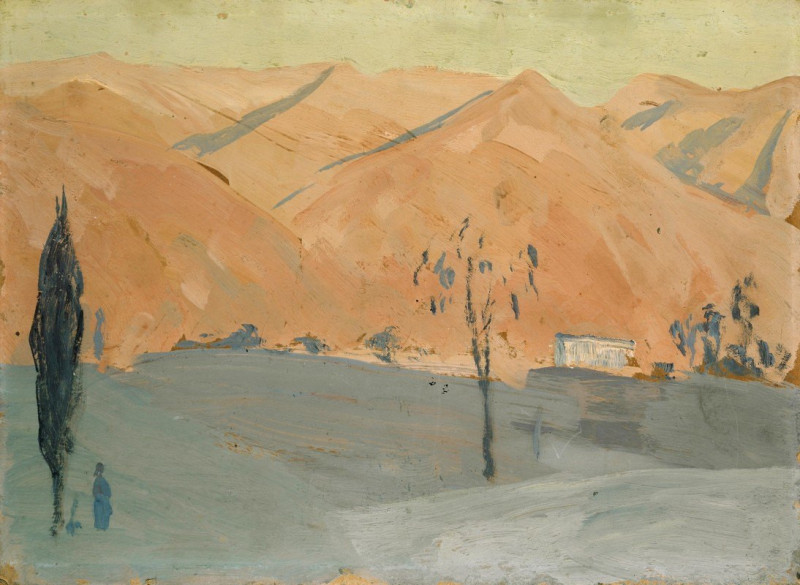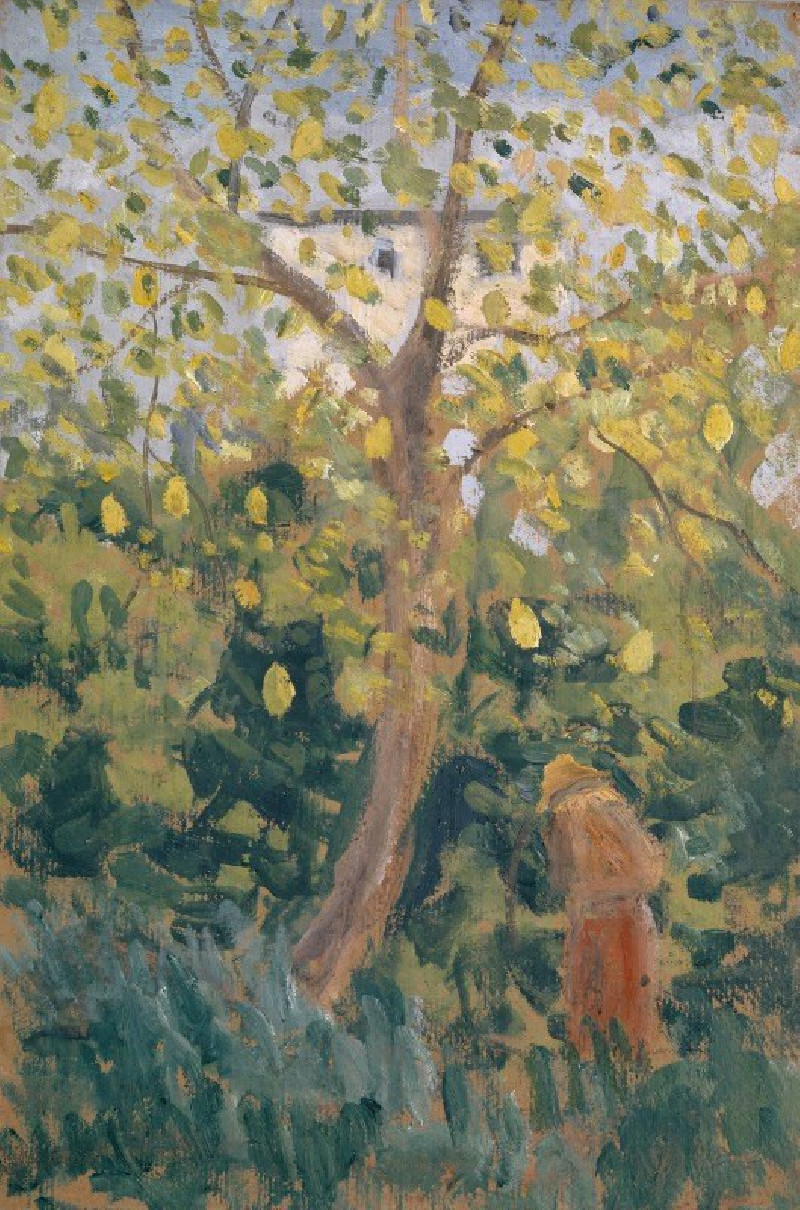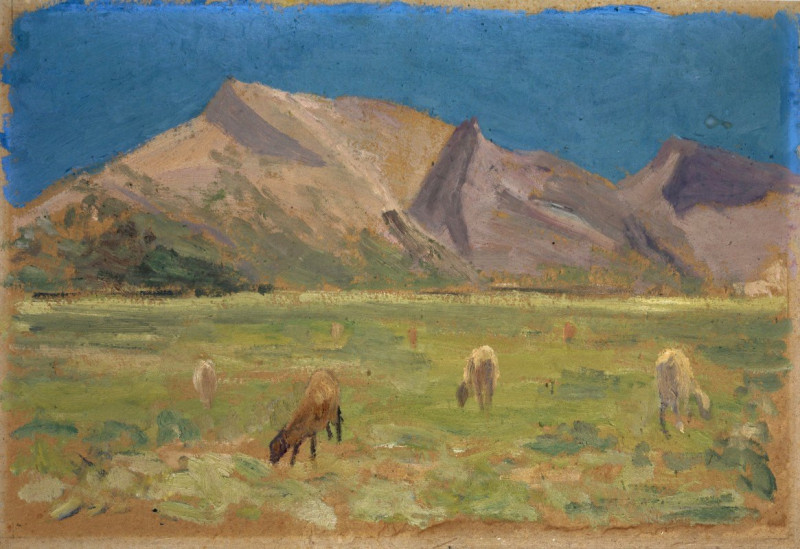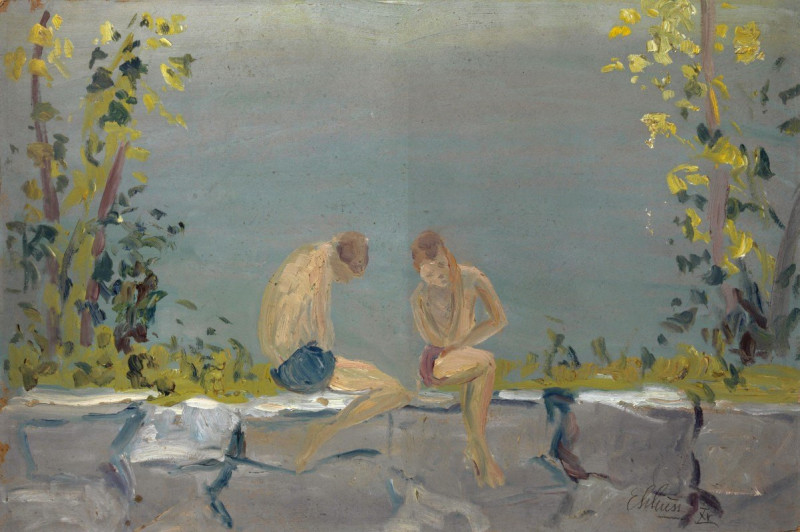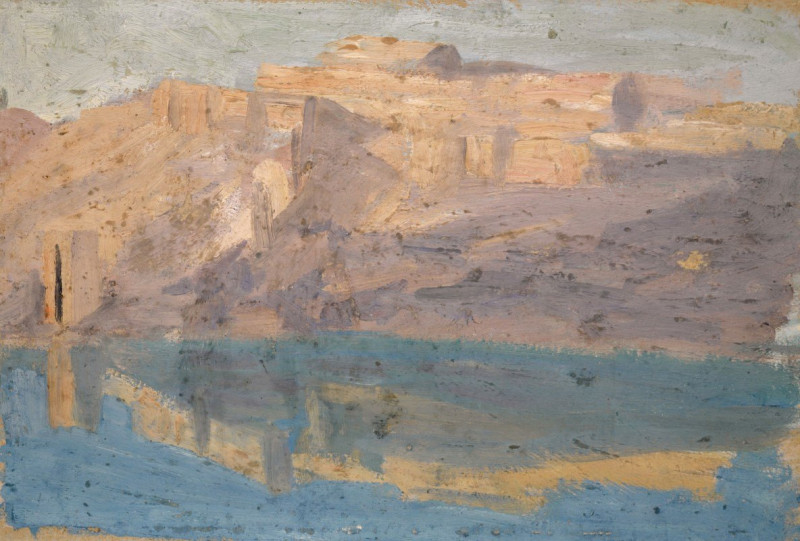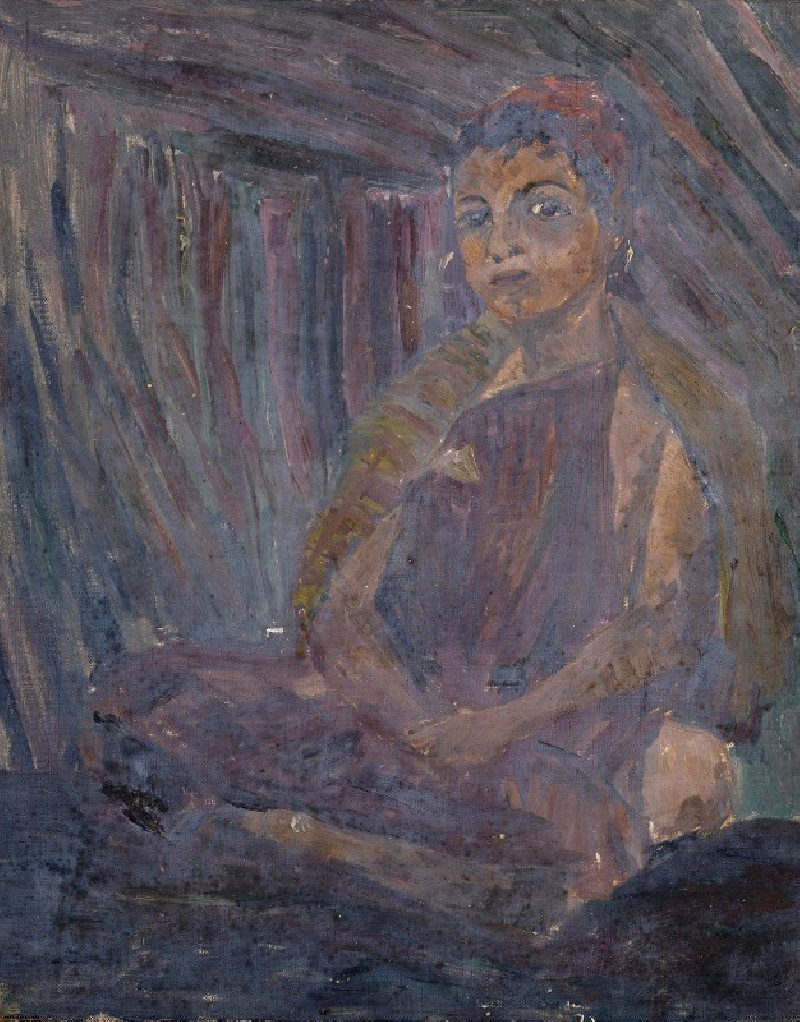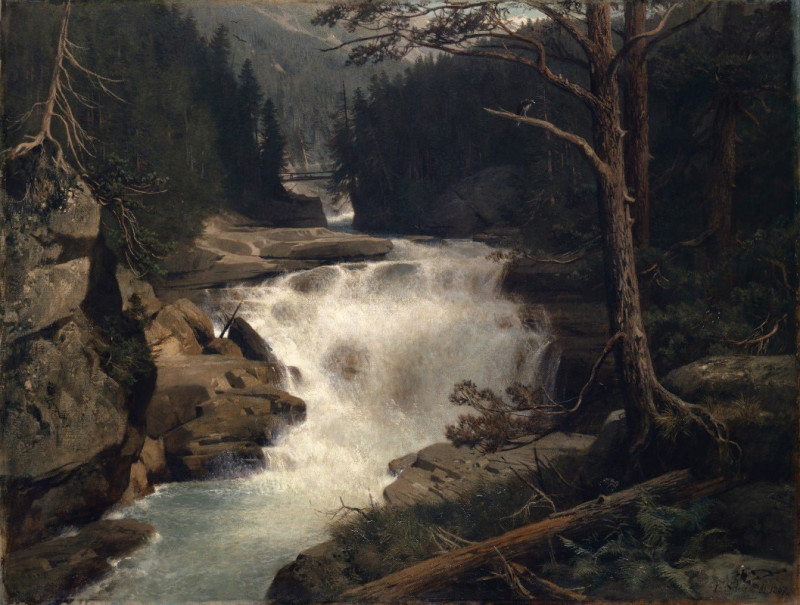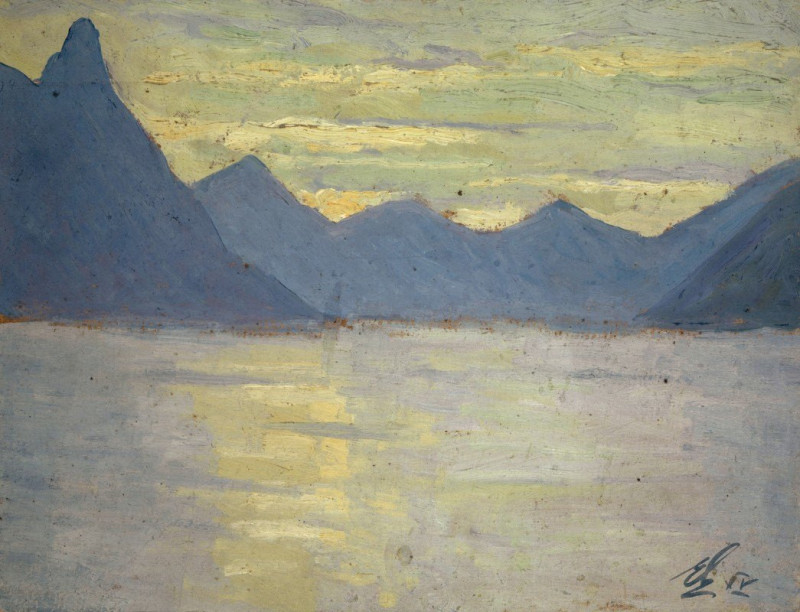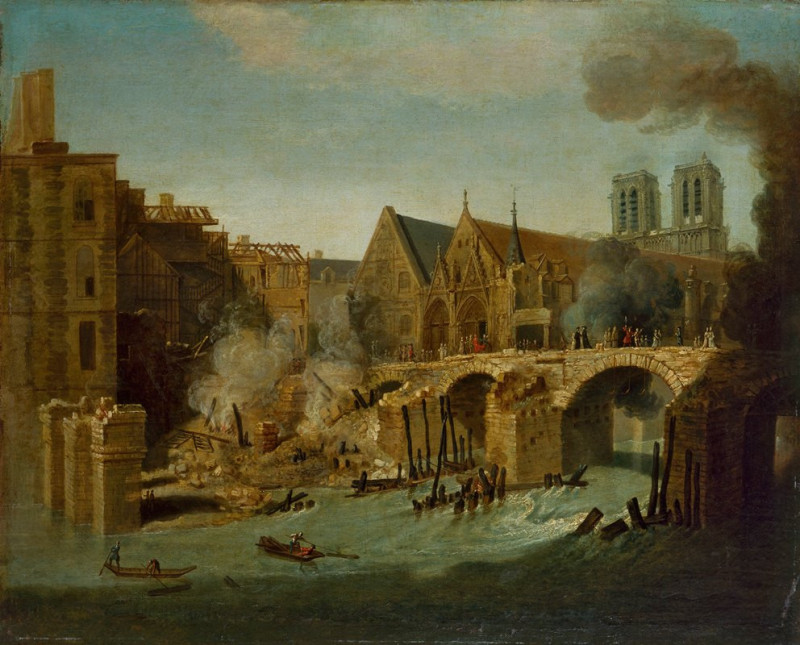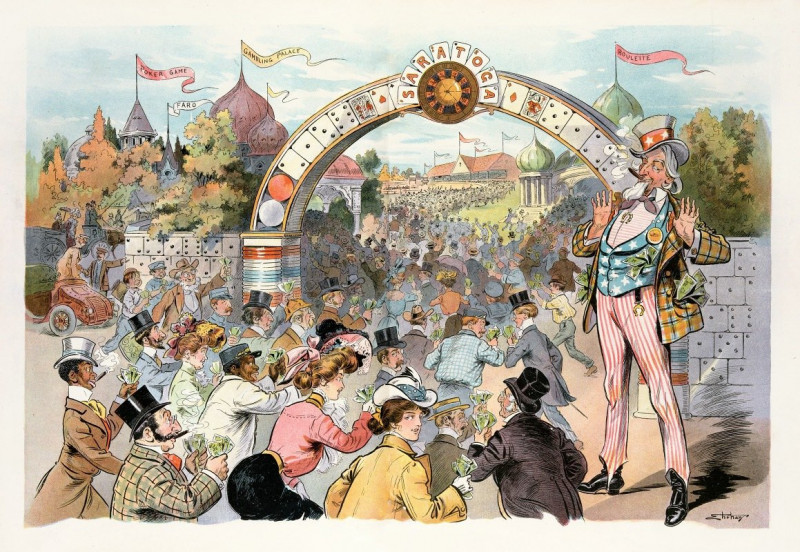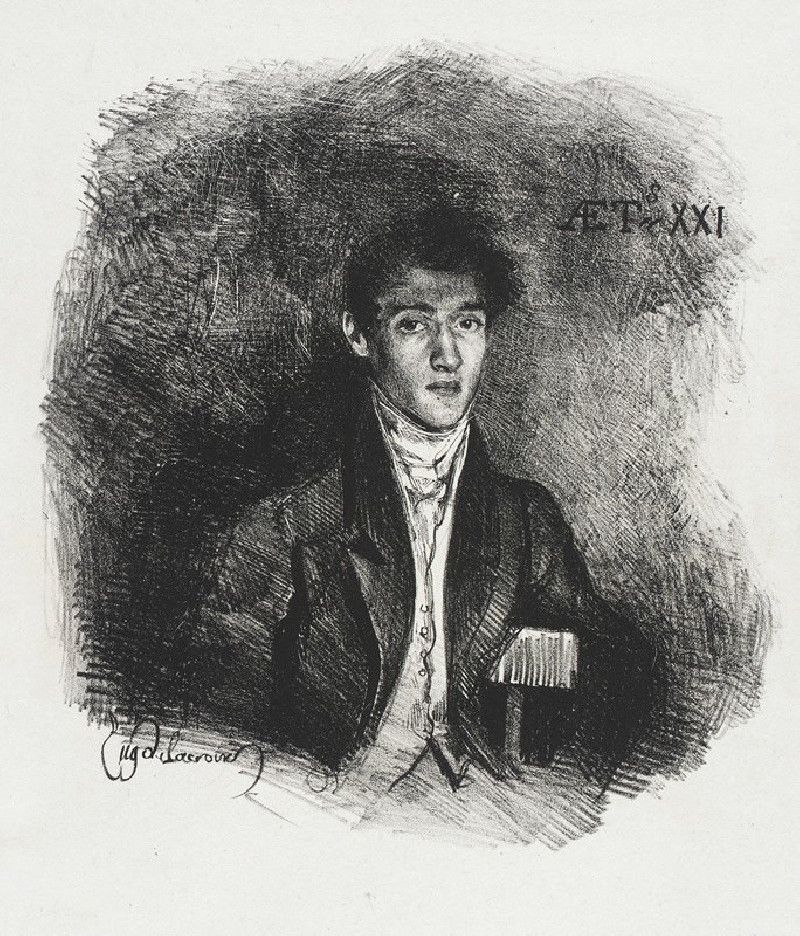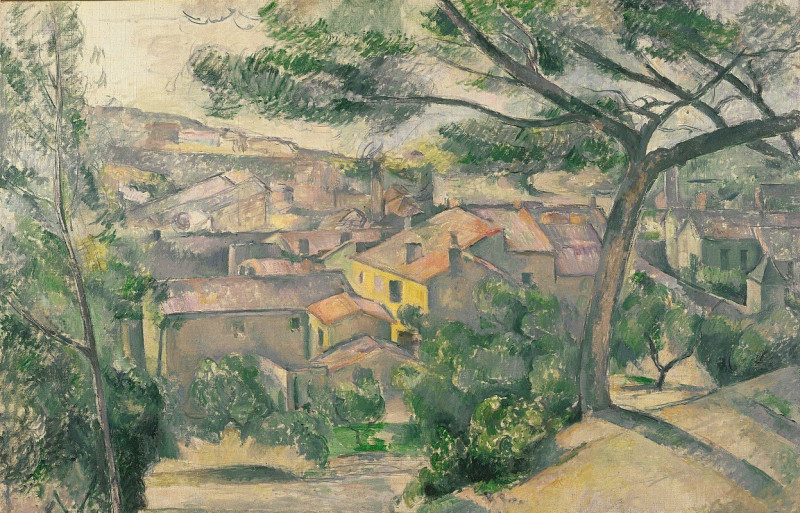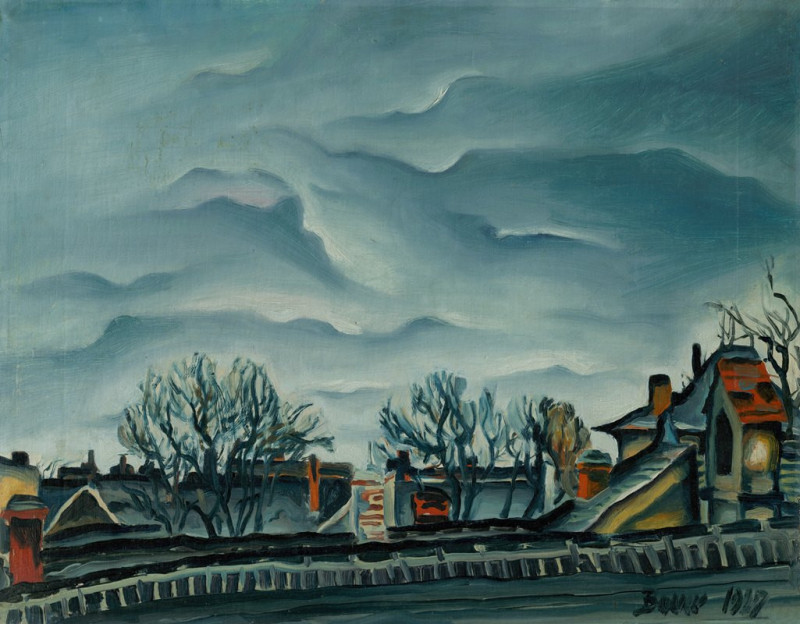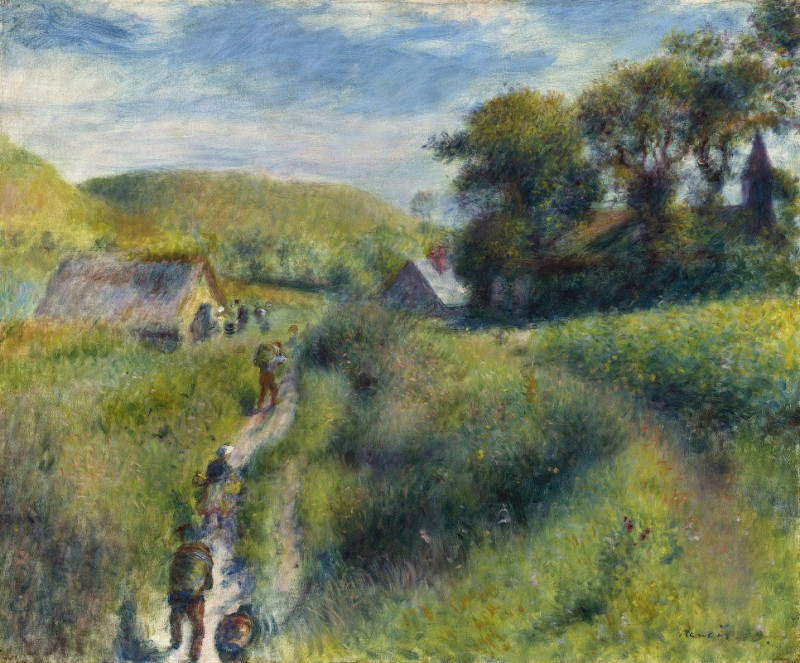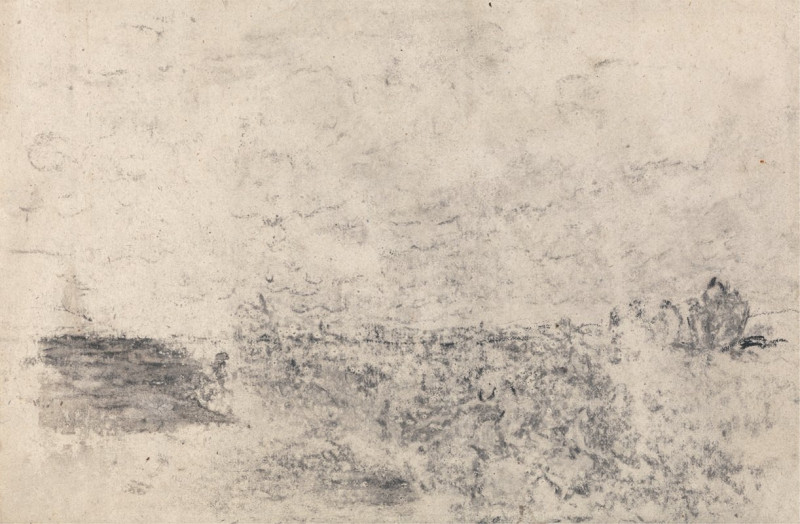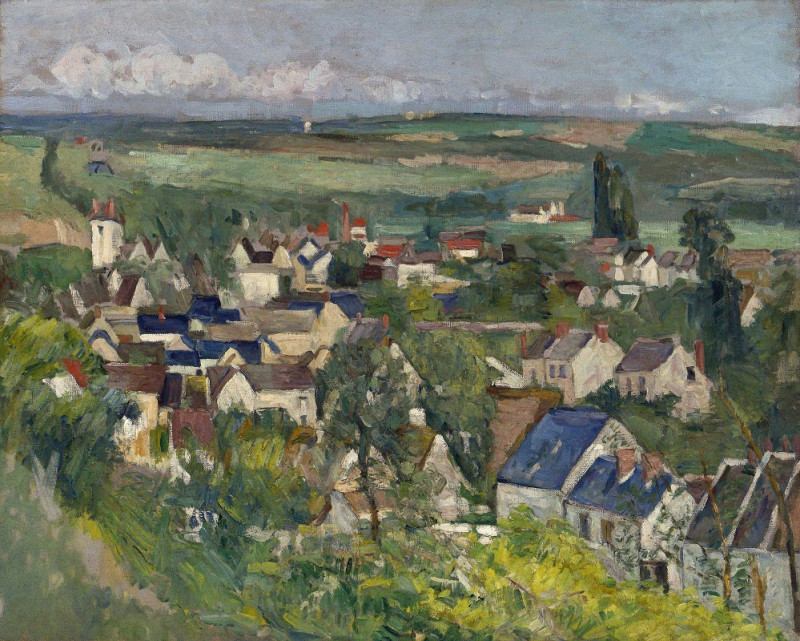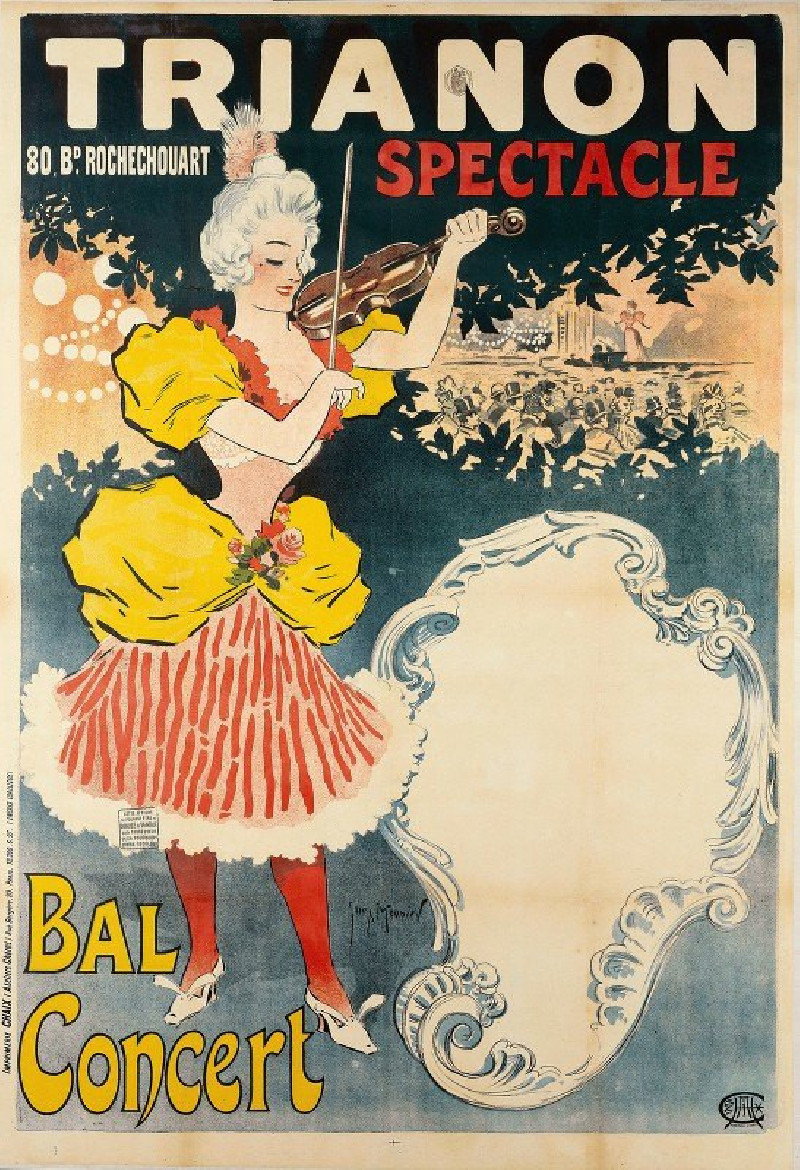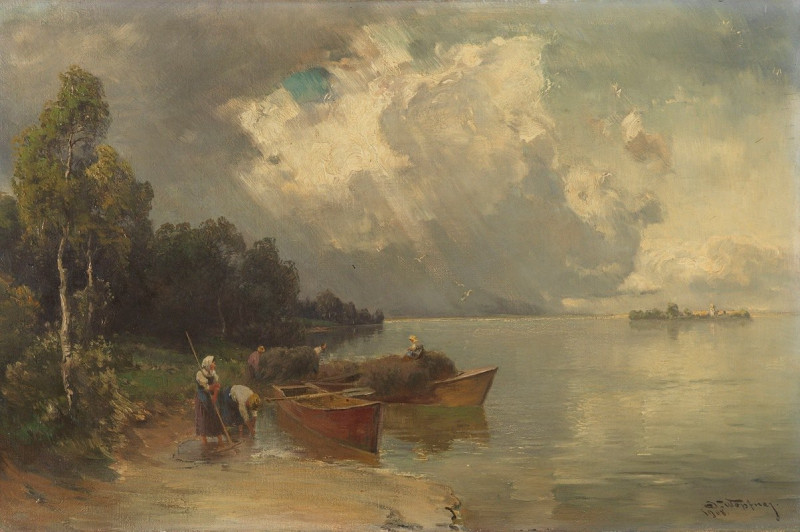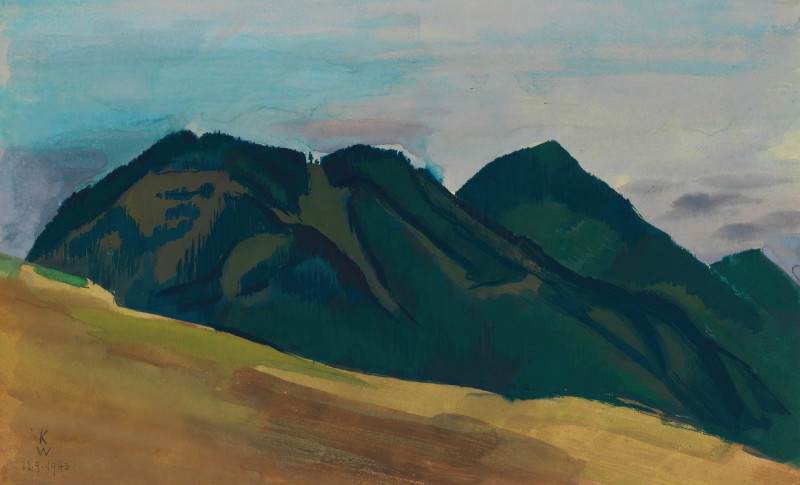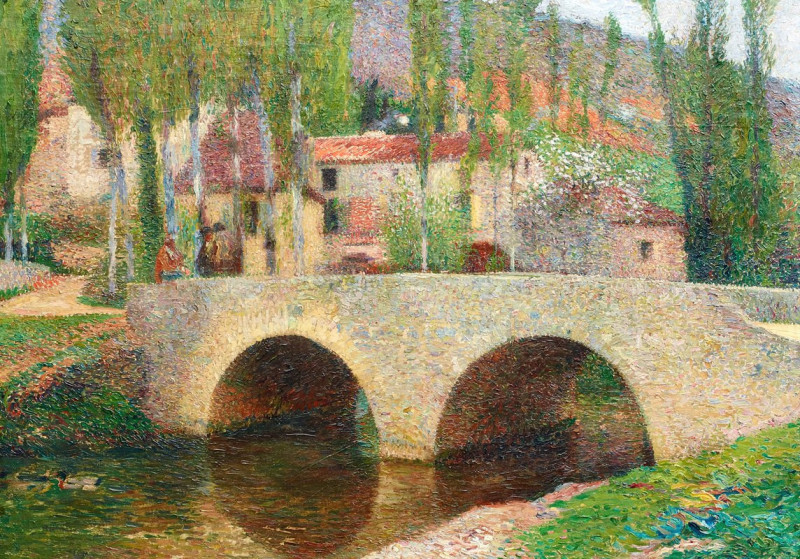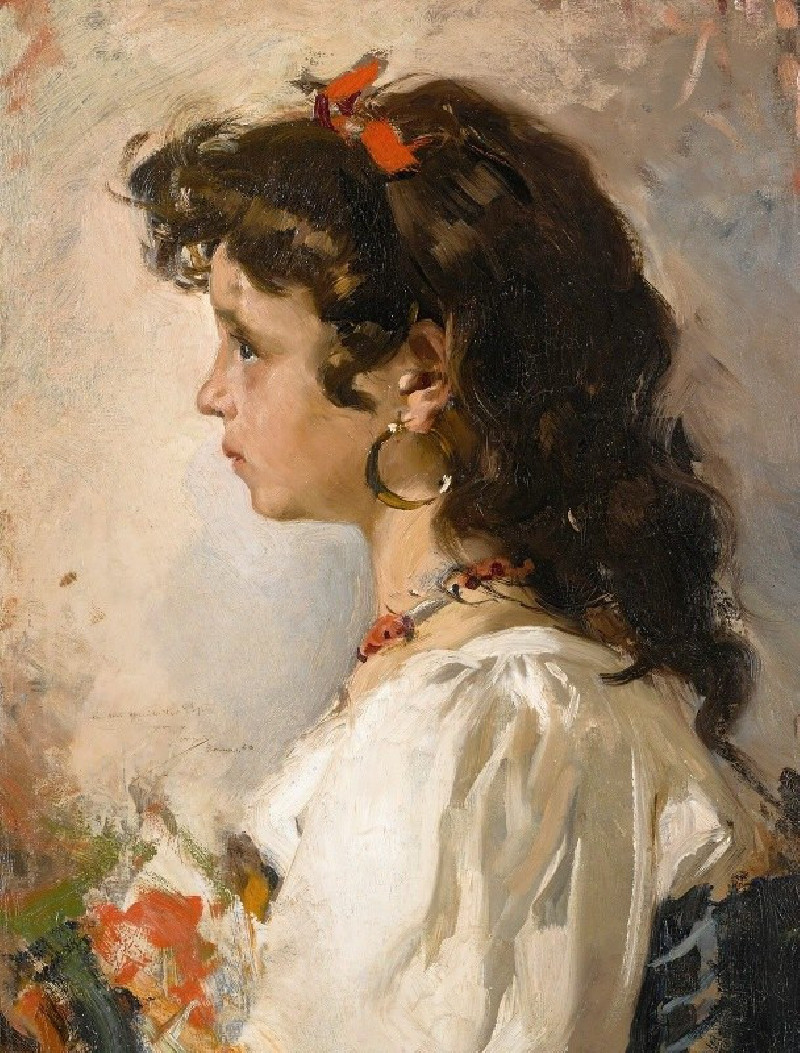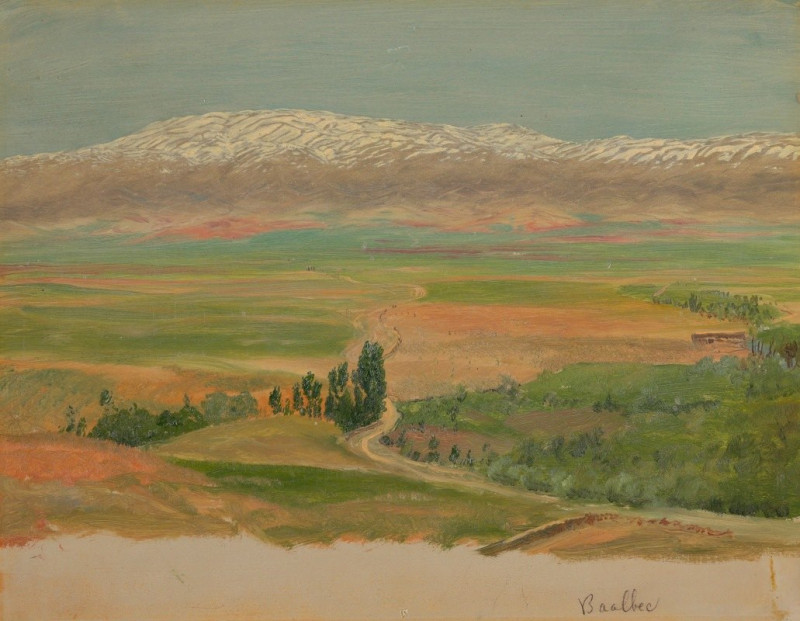Vier hockende Beduinen (1916–1918)
Technique: Giclée quality print
Recommended by our customers
More about this artwork
Ernst Schiess’s painting, "Vier hockende Beduinen" or "Four Crouching Bedouins," offers a captivating glimpse into the lives of Bedouin people, depicted during the years 1916 to 1918. This artwork beautifully captures the essence of four individuals seated against a backdrop that suggests a sparse, arid environment, likely hinting at the vast stretches of the desert inhabited by the Bedouin tribes.The figures are portrayed in a simple, unembellished style, utilizing a palette of earthy tones that blend seamlessly with faint strokes of vibrant colors. Schiess employs loose brushwork to convey the textures of the clothing and the environment, providing a sense of movement and life within the static scene. The individuals are clad in traditional attire, with the central figure in striking blue, setting a vivid contrast against the more subdued colors of the surrounding figures, enhancing the visual impact of the painting.The artist’s technique and choice of colors evoke a raw, almost unfinished feel, which may reflect the transitory and resilient lifestyle of the Bedouins. This work of art not only depicts an ethnographic interest but also resonates with themes of community and the human experience in adapting to harsh environments.Ernst Schiess’s "Vier hockende Beduinen" invites viewers to delve into a historical context, presenting a moment of daily life that is both intimate and universally relatable, highlighting his skill in capturing human emotions and cultural significance through his art.


